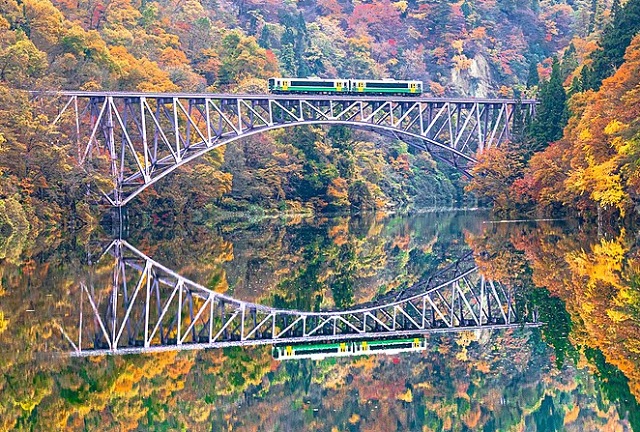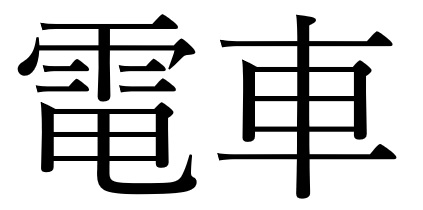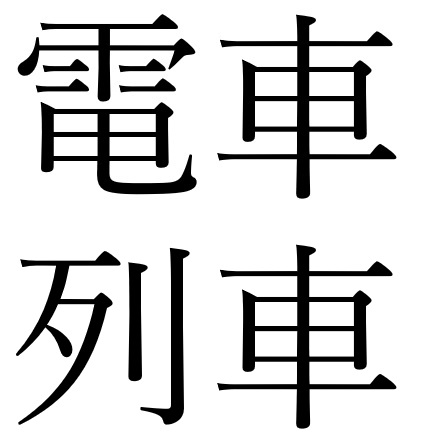
Rail otaku take NHK to task.
October 1 is going to be a big day for the Tadami train line (pictured above), which runs from Fukushima Prefecture to Niigata Prefecture. Since being hit by heavy rainstorms in the summer of 2011, nearly the entire line, specifically the 88.4-kilometer (54.9-mile) section between Aizu-Wakamatsu and Tadami Stations, has been shut down. Repairs are finally nearing completion, though, and after a decade-plus wait, service is set to resume at the beginning of next month.
Rail operator JR East has already begun test runs ahead of the public reopening, and Japanese public broadcaster NHK was eager to share footage of the long-awaited return of rolling stock to the line, with NHK Fukushima posting this video to its official Twitter account…
昨日のツイートで『列車』と表記すべきところを、誤って『電車』と表記してしまいました。お詫びして訂正いたします。 https://t.co/HnxJOM3fKX
— NHK福島放送局 (@nhk_fukushima) September 7, 2022
…along with this message.
“A test run event ahead of the Tadami Line’s reopening! It was a touching sight to see a train running on this section of the line, which has been shut down for 11 years.”
Seems pretty straightforward, right? And yet, NHK would soon have to issue a correction and an apology for an inaccuracy in the statement. Yes, that’s the Tadami Line in the video, and yes, it’s been shut own for 11 years. However, the vehicle shown is not “a train,” or at least not the kind of train NHK said it was.
The Japanese word that NHK used was densha, which might not seem it should cause any sort of commotion. If you’re studying Japanese, the first word your textbook is going to teach you for “train” is densha, and that’s also likely to be the first entry you’ll find for “train” in an English-to-Japanese dictionary. But while all densha are trains, not all trains are densha. Let’s take a look at the kanji characters densha is written with.
We’ll start with the second character. 車 is read as sha and originally means “cart,” but in modern contexts can also mean “car,” both in terms of an automobile and a train car, so there’s no problem there. The first kanji, though, 電/den, means “electricity,” and so the word densha refers specifically to a train that runs on electricity.
The problem, though, is that the train seen running on the Tadami Line in NHK’s video isn’t electric. It’s diesel, and so it’s not a densha, but a ressha, a word that can be used for trains of any type.
▼ Densha (top) and ressha (bottom). Ressha’s kanji translate literally as “column car.”
Shortly after posting the video, the thread was flooded with responses from rail fans rapidly pointing out the incorrect terminology.
“Densha?????
“So that’s a densha, huh?”
“Den…sha?”
“I don’t see any power lines for electricity.”
“Wow, what a cool DENSHA!”
“Such a lovely truck.”
“To us train otaku, this feels like disparaging treatment of a diesel train.”
“That’s not a densha. The difference is as big as the one between gyudon [beef bowls] and butadon [pork bowls].”
The next morning, NHK tweeted an apology.
昨日のツイートで『列車』と表記すべきところを、誤って『電車』と表記してしまいました。お詫びして訂正いたします。 https://t.co/HnxJOM3fKX
— NHK福島放送局 (@nhk_fukushima) September 7, 2022
“In our tweet yesterday we should have used the word ressha, not densha. We apologize and offer this correction.”
In NHK’s defense, densha are by far the type of train the vast majority of Japanese people are most familiar with, as most commuter trains in urban/suburban areas are electric, and in casual conversation it’s not uncommon for people to use “densha” as a catch-all for trains in general. Still, densha is indeed the wrong term for the type of train shown in the video, and given the inherent interest rail otaku were going to have in the story, it’s not a shock that they’d needle NHK for the mistake.
But hey, at least the screw-up wasn’t as big as calling a Gundam a Transformer.
Source: Twitter/@nhk_fukushima (1, 2) via Otakomu
Top image: Wikipedia/ Wikipedia/Agakambara
● Want to hear about SoraNews24’s latest articles as soon as they’re published? Follow us on Facebook and Twitter!
Follow Casey on Twitter, where it bothers him when someone uses “roadster” to mean “convertible.”



 Better know a train nerd: 36 different classifications for Japan’s “densha otaku”
Better know a train nerd: 36 different classifications for Japan’s “densha otaku” Unexpectedly cute stowaway on JR train causes delays, smiles
Unexpectedly cute stowaway on JR train causes delays, smiles J!NS and Japan Rail East collaborate to bring a small piece of train history to your face
J!NS and Japan Rail East collaborate to bring a small piece of train history to your face Tokyo travel alert: City’s most important train line shutting down for construction this weekend
Tokyo travel alert: City’s most important train line shutting down for construction this weekend Japanese train company issues official apology for “inexcusable” 25-second early departure
Japanese train company issues official apology for “inexcusable” 25-second early departure Hello, cosmetics! Clinique teams up with Hello Kitty this summer for first-time collaboration
Hello, cosmetics! Clinique teams up with Hello Kitty this summer for first-time collaboration How to order snacks on a Shinkansen bullet train in Japan
How to order snacks on a Shinkansen bullet train in Japan Burger King Japan suddenly adds Dr. Pepper and Dr. Pepper floats to its menu nationwide
Burger King Japan suddenly adds Dr. Pepper and Dr. Pepper floats to its menu nationwide Japan’s new difficult-to-drink-from beer glass protects your liver, but it’s a brutal experience
Japan’s new difficult-to-drink-from beer glass protects your liver, but it’s a brutal experience New samurai glasses are Japan’s latest weird must-have souvenir
New samurai glasses are Japan’s latest weird must-have souvenir Studio Ghibli releases Ponyo donburi bowl to bring anime ramen to life
Studio Ghibli releases Ponyo donburi bowl to bring anime ramen to life New Nintendo Lego kit is a beautiful piece of moving pixel art of Mario and Yoshi【Photos】
New Nintendo Lego kit is a beautiful piece of moving pixel art of Mario and Yoshi【Photos】 Nintendo history you can feel – Super NES, N64, and GameCube controllers become capsule toys
Nintendo history you can feel – Super NES, N64, and GameCube controllers become capsule toys Demon Slayer: Kimetsu no Yaiba gets new roller coaster attractions and food at Universal Studios Japan
Demon Slayer: Kimetsu no Yaiba gets new roller coaster attractions and food at Universal Studios Japan High-fashion Totoro cuddle purse is like an elegant stroll in the forest【Photos】
High-fashion Totoro cuddle purse is like an elegant stroll in the forest【Photos】 “The most Delicious Cup Noodle in history” – Japan’s French Cup Noodle wins our heart【Taste test】
“The most Delicious Cup Noodle in history” – Japan’s French Cup Noodle wins our heart【Taste test】 Starbucks releases a cute Frappuccino and Unicorn Cake…but not in Japan
Starbucks releases a cute Frappuccino and Unicorn Cake…but not in Japan Kyoto Tower mascot termination reveals dark side behind cute Japanese characters
Kyoto Tower mascot termination reveals dark side behind cute Japanese characters McDonald’s Japan’s Soft Twist Tower: A phantom ice cream only sold at select branches
McDonald’s Japan’s Soft Twist Tower: A phantom ice cream only sold at select branches Yabai Ramen: What makes this Japanese ramen so dangerous?
Yabai Ramen: What makes this Japanese ramen so dangerous? Finally! Nintendo Japan expands Switch 8-bit controller sales to everybody, Online member or not
Finally! Nintendo Japan expands Switch 8-bit controller sales to everybody, Online member or not Japanese government wants to build luxury resorts in all national parks for foreign tourists
Japanese government wants to build luxury resorts in all national parks for foreign tourists To combat declining birth rate, Japan to begin offering “Breeding Visas” to foreigners
To combat declining birth rate, Japan to begin offering “Breeding Visas” to foreigners 10 things you should buy at 7-Eleven in Japan
10 things you should buy at 7-Eleven in Japan Studio Ghibli releases anime heroine cosplay dresses that are super comfy to wear
Studio Ghibli releases anime heroine cosplay dresses that are super comfy to wear Woman charged for driving suitcase without a license in Osaka
Woman charged for driving suitcase without a license in Osaka Studio Ghibli unveils My Neighbour Totoro miniature house model
Studio Ghibli unveils My Neighbour Totoro miniature house model Kyoto experiencing problems with foreign tourists not paying for bus fares, but not on purpose
Kyoto experiencing problems with foreign tourists not paying for bus fares, but not on purpose Fighting mild hunger with a Japanese soda that turns into jelly in the stomach【Taste test】
Fighting mild hunger with a Japanese soda that turns into jelly in the stomach【Taste test】 Studio Ghibli’s Howl’s Moving Castle tapestry unveiled in Japan for first time
Studio Ghibli’s Howl’s Moving Castle tapestry unveiled in Japan for first time McDonald’s new Happy Meals offer up cute and practical Sanrio lifestyle goods
McDonald’s new Happy Meals offer up cute and practical Sanrio lifestyle goods Sales of Japan’s most convenient train ticket/shopping payment cards suspended indefinitely
Sales of Japan’s most convenient train ticket/shopping payment cards suspended indefinitely Sold-out Studio Ghibli desktop humidifiers are back so Totoro can help you through the dry season
Sold-out Studio Ghibli desktop humidifiers are back so Totoro can help you through the dry season Japanese government to make first change to romanization spelling rules since the 1950s
Japanese government to make first change to romanization spelling rules since the 1950s Foreigner’s request for help in Tokyo makes us sad for the state of society
Foreigner’s request for help in Tokyo makes us sad for the state of society Ghibli founders Toshio Suzuki and Hayao Miyazaki contribute to Japanese whisky Totoro label design
Ghibli founders Toshio Suzuki and Hayao Miyazaki contribute to Japanese whisky Totoro label design Doraemon found buried at sea as scene from 1993 anime becomes real life【Photos】
Doraemon found buried at sea as scene from 1993 anime becomes real life【Photos】 Tokyo’s most famous Starbucks is closed
Tokyo’s most famous Starbucks is closed Princesses, fruits, and blacksmiths: Study reveals the 30 most unusual family names in Japan
Princesses, fruits, and blacksmiths: Study reveals the 30 most unusual family names in Japan Messaging app LINE experiments with service to help pregnant women find seats on trains
Messaging app LINE experiments with service to help pregnant women find seats on trains Japan’s public broadcaster wins landmark court case and 12 bucks
Japan’s public broadcaster wins landmark court case and 12 bucks Driverless train reverses by accident in Japan, injuring over a dozen passengers
Driverless train reverses by accident in Japan, injuring over a dozen passengers Video shows that in Japan, even the train evacuations are orderly 【Video】
Video shows that in Japan, even the train evacuations are orderly 【Video】 Japanese train conductor flips off rail fan photographer, prompts apology from JR
Japanese train conductor flips off rail fan photographer, prompts apology from JR “Passengers who don’t want to be groped, please use the rear train cars” announcement angers Japan
“Passengers who don’t want to be groped, please use the rear train cars” announcement angers Japan These are the 11 most crowded trains in Japan…and surprise! They’re all in the Tokyo area
These are the 11 most crowded trains in Japan…and surprise! They’re all in the Tokyo area Real-life Spirited Away train line found in Japan?
Real-life Spirited Away train line found in Japan? The pitfalls of inter-otaku conversation, turns out it’s no better than with non-otaku
The pitfalls of inter-otaku conversation, turns out it’s no better than with non-otaku Tokyo partially shut down busiest train line, 3,200 workers fought clock on platform project【Vid】
Tokyo partially shut down busiest train line, 3,200 workers fought clock on platform project【Vid】 NHK can now pester you through your mail thanks to new service from Japan Post
NHK can now pester you through your mail thanks to new service from Japan Post Space One rocket explodes immediately after liftoff in Japan【Videos】
Space One rocket explodes immediately after liftoff in Japan【Videos】 Tokyo woman, only person to win court case against Japan’s public broadcaster, told to pay up
Tokyo woman, only person to win court case against Japan’s public broadcaster, told to pay up Japanese cheater learns why you should never try to lie to your train otaku girlfriend
Japanese cheater learns why you should never try to lie to your train otaku girlfriend “Protect the Nation from NHK Party” becomes “Protect the Nation from Old Parties Party”
“Protect the Nation from NHK Party” becomes “Protect the Nation from Old Parties Party”
Leave a Reply